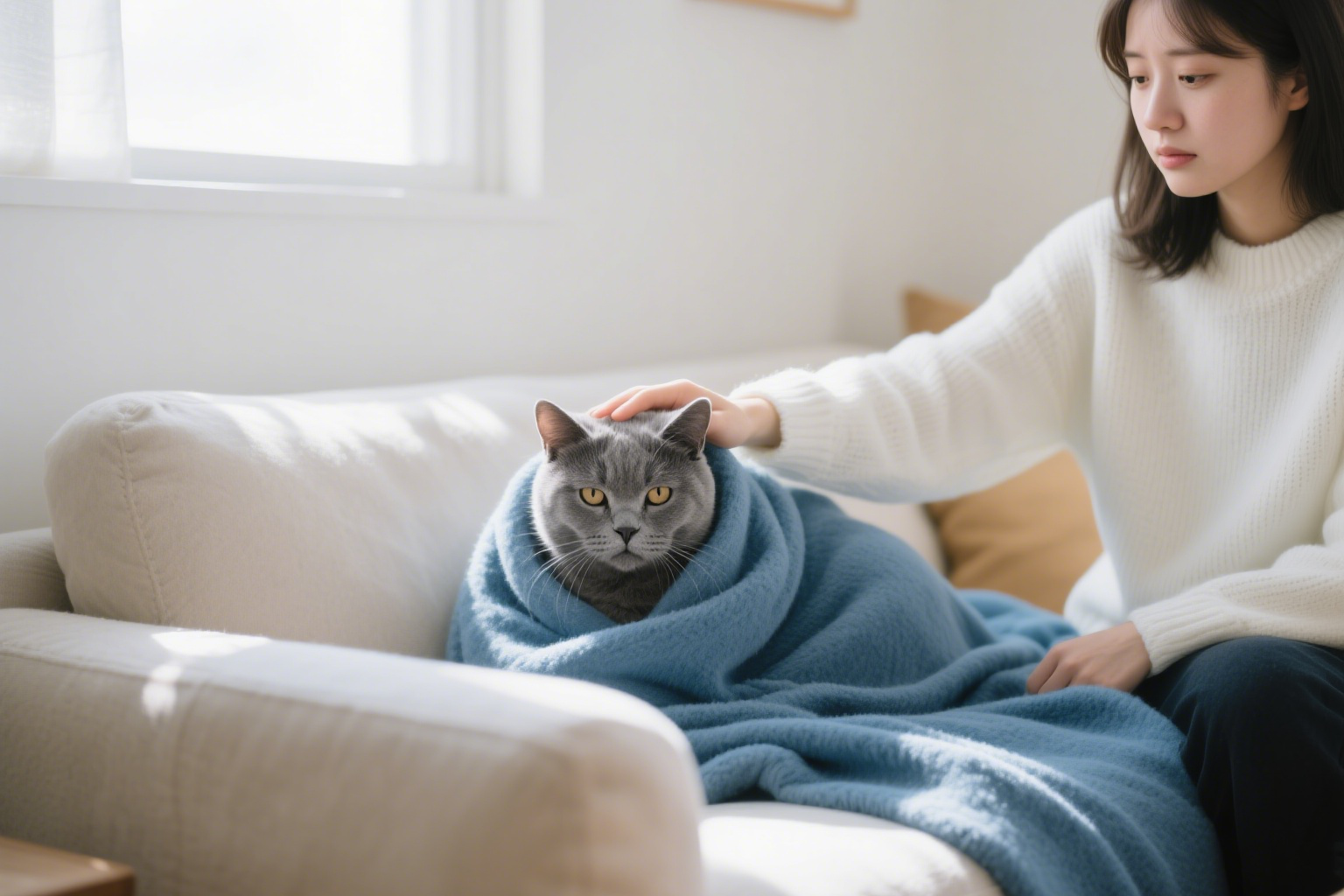It’s one of the most stressful experiences for a new cat parent: your beloved feline friend is clearly uncomfortable. Whether it’s frequent vomiting, chronic diarrhea, or just a general lack of appetite, a sensitive stomach can be distressing for both you and your cat. The good news is that very often, the solution can be found right in their food bowl.
But navigating the world of pet food can feel overwhelming. What does “sensitive stomach formula” even mean? This comprehensive beginner’s guide is here to help. We’ll walk you through the potential causes of digestive issues and show you exactly what to look for when choosing the best cat food for a sensitive stomach.
Disclaimer: We are passionate cat lovers, not veterinarians. The information in this article is for educational purposes only and is not a substitute for professional veterinary advice. If your cat is experiencing digestive issues, your first and most important step should always be to consult your vet to rule out any underlying health conditions.

Table of Contents
Why Does My Cat Have a Sensitive Stomach?
Before we dive into solutions, it helps to understand the common culprits behind your cat’s tummy troubles. While a vet diagnosis is essential, here are a few common reasons a cat might develop a sensitive stomach:
- Food Allergies or Intolerances: This is the most common cause. Cats can develop sensitivities to certain ingredients over time, most frequently to common proteins like chicken, beef, or fish.
- A Sudden Change in Diet: Switching your cat’s food too quickly can shock their digestive system. A slow, gradual transition is always key.
- Low-Quality Ingredients & Fillers: Some cat foods are packed with hard-to-digest fillers like corn, wheat, and soy, or artificial additives that can irritate a cat’s GI tract.
- Eating Too Fast: Sometimes, the problem isn’t what they eat, but how they eat. Anxious or excited cats might gulp down their food, leading to regurgitation.
What to Look For: Key Features of a Sensitive Stomach Cat Food
When you’re scanning the pet food aisle or browsing online, here are the key features you should be looking for. This knowledge will empower you to choose a cat food that truly helps with their sensitive stomach.
1. Limited Ingredient Diets (LID)
A Limited Ingredient Diet is your best friend when tackling food sensitivities. The principle is simple: fewer ingredients mean fewer potential triggers for an allergic reaction. These foods typically feature a single, novel protein source (a protein your cat has likely never eaten before, like duck or rabbit) and a single, easily digestible carbohydrate source.
2. Highly Digestible, High-Quality Proteins
The protein source is paramount. Look for whole, named proteins at the top of the ingredients list, such as “Deboned Duck” or “Rabbit,” rather than vague terms like “meat by-products.” These high-quality proteins are easier for your cat’s body to break down and absorb, putting less stress on their digestive system.
3. Probiotics & Prebiotics
Think of probiotics as the “good bacteria” that live in your cat’s gut. They are essential for healthy digestion. Prebiotics, like fiber, are essentially food for these good bacteria. Many high-quality formulas designed for digestive health will include these beneficial additives to help restore balance to a troubled tummy and can be a great help for a case of cat diarrhea food management.
4. The Right Kind of Fiber
Fiber is crucial for digestive health. A good cat food will have a balanced blend of soluble and insoluble fiber. Natural sources like pumpkin, beet pulp, or psyllium husk can help firm up stool in cases of diarrhea and improve overall gut motility.
Ingredients to AVOID When Your Cat Has a Sensitive Stomach
What isn’t in the food is just as important as what is. When you’re a beginner trying to find the right cat food, make sure the label does NOT contain:
- Common Allergens: If you don’t know the specific trigger, it’s wise to start by avoiding the most common culprits: chicken, beef, dairy, and sometimes even fish.
- Artificial Colors, Flavors, or Preservatives: Chemicals like BHA, BHT, and ethoxyquin have no nutritional value and can be major irritants. A food’s color should be natural.
- Heavy Fillers: A long list of corn, wheat, or soy near the top of the ingredients list can be a red flag. These are often used to bulk up food cheaply and can be difficult for a cat’s carnivorous digestive system to handle.
The Golden Rule: How to Transition to a New Cat Food
Once you’ve selected a promising new food, do not make the mistake of switching it overnight! This is a recipe for more digestive upset. Follow this slow transition plan over 7-10 days:
- Days 1-3: 75% old food, 25% new food
- Days 4-6: 50% old food, 50% new food
- Days 7-9: 25% old food, 75% new food
- Day 10: 100% new food
Monitor your cat closely during this period. If issues worsen, slow down the transition or consult your vet.
Final Thoughts
Finding the perfect cat food for a sensitive stomach is a journey of patience and observation. By starting with a vet consultation and then using this beginner’s guide to choose a high-quality, limited-ingredient diet, you are taking a massive step toward helping your feline friend feel happy, healthy, and comfortable again. Remember to introduce any new food slowly and celebrate the small victories along the way.